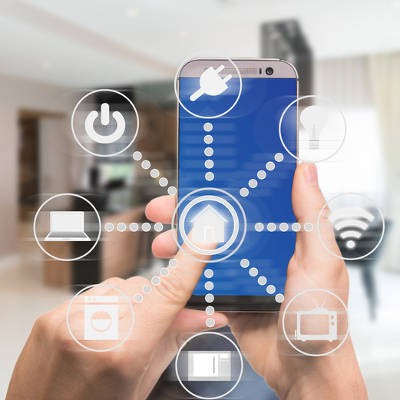The term “smart technology” has been around for a while. There are now millions of products that are now “connected”. They include smart forks, smart tortilla makers, and most inexplicably, a smart egg tracker; and, that’s only in the kitchen. For most people, the smart tech that they are considering is that of Internet-connected devices that actually have some day-to-day practical utility. Today, we will look at some sectors of the smart technology industry that are making great headway as we speed toward a ubiquitously-connected future.
For Your Person
There are plenty of smart products that are designed to help people stay on top of their health. The most recognizable of this technology are wearable devices that function as tools to help measure something specific about a person’s health. Led by companies like fitbit, many of today’s wearables are designed as multi-function physical training tools. Products like health bracelets, watches, and smart fabrics are designed to connect to the Internet or to an Internet-connected mobile device.
The way it works is that each of these devices are built with microprocessors, sensors, and an energy source of some type. Engineers have toiled over the creation of this technology for over a decade, and today, with advancements in each, products are readily available that interest consumers enough to warrant over 125 million wearable units to be shipped in 2017 alone. Some smart products for your body include:
- Fitness trackers - Even the simplest ones track steps taken and estimated calories burned, while many also monitor distance traveled, sleep quality, and how fast you go.
- Smart watches - Some have fitness settings, but many of today’s smartwatches have ecosystems that run on apps. They are capable of a lot of useful things.
- Smart clothes - Most smart clothes are designed for use in exercise. There are self-cooling shirts that trigger when the body temperature rises to a certain temperature, and even yoga outfits that can help you master your form.
For Your Transportation
Today, a lot of work has gone into smart technology for the automobile. There are now cars that offer anything from face up displays that are easy to interact with, to screens that show two different sets of content depending where you sit in the car, to self-driving capabilities. This just touches what’s possible for future transportation. At this point, however, we are making headway in what will one day be a sector technology will virtually dominate.
You don’t have to buy one of these cars to see smart technology working for you. Since 1996, ever car that has been manufactured has been built with an on-board diagnostic system. This innovation allows mechanics to access data about the vehicle. Today, there are several commercially available diagnostic tools that you can use to ascertain the health of your car without taking it to a mechanic.
Today’s smart enhancements reach beyond the actual performance of the car, they make the user experience more immersive. Obviously navigation systems, especially those that also provide a simple interface to control the media, temperature, and drive type bring a lot of value to drivers. The use of cameras have also made a big difference for the modern driver. Not only do many cars now come with standard backup cameras, there are other cameras some drivers choose to use to enhance the security of their automobile.
That’s not all. The future holds a lot of innovation for the “smart” car. The addition of augmented reality displays on windshields and in rear-view mirrors will eventually become standard technology that will give the inside of your car a whole different look. More is being done by Google and Apple to integrate user’s smartphones with the car’s onboard computer, allowing users to have a static interface that will eliminate the need for anyone to pick up their smartphone while they are driving, a major cause for vehicular deaths nowadays.
For Your Home
A majority of “smart” technology is for use in the home. Some devices are seemingly ridiculous, borderlining on superfluous (like the ones referenced above), but many are designed to help people manage their energy costs. Some of the most popular smart devices for the home include smart speakers. The Amazon Echo and Google Home smart speakers serve multiple purposes and with a little care and research can control a lot of the other smart products that make up the “smart home”. Those devices include locks, cameras, lights, thermostats, basically anything that you can control digitally, you can now control through applications on your mobile device or via one of these in-house smart speakers.
Beyond that, many of the appliances that people depend on now come with smart capabilities. Refrigerators, ranges, faucets, washers, dryers, dishwashers, vacuums, and smaller appliances can now be controlled remotely and monitored. Many naysayers to this type of technology root their skepticism in the practical applications of these connected devices. They will often make the argument that who needs a vacuum that is connected to the internet? Beyond the novelty, the machine gets smarter. By learning how to do things efficiently, it cuts down on energy costs and provides you with value by keeping your floors clean without you having to physically do it.
Same concept is in play for all smart tech. The smarter your tech is, the more useful it is.
Most of these technologies come with a hefty price tag, but as the technology becomes more commonplace and demand increases, supply will as well, which will eventually drop the cost to consumers. You can already see this happen as much of the smart tech has significantly dropped in price already.
For more information about smart technology or new technology trends, contact our IT professionals at (305) 448-6126.

